The monsoon season might seem like a respite after the scorching summer heat, but it is also the time when several diseases are on the rise. In India, the monsoon season arrives in the month of June and lasts till September. It refreshes everyone, but the weather remains humid and it is ideal for germs to flourish and a perfect breeding time for mosquitoes. Deadly diseases like Malaria, Dengue, Chikungunya and Typhoid are common diseases during the rainy season and almost all of these present with a few common symptoms like fever, weakness and body ache.
Dengue – Every year in India, many people die due to dengue. There are 1,64,103 dengue cases reported in 2021. It is spread by the female Aedes mosquitoes and they usually bite during the daytime or before dusk. The symptoms of this disease include high fever followed by body aches. The affected individual may also experience excessive sweating and headaches, pain behind the eyes, nausea, vomiting, fatigue, rashes, mild bleeding and low blood pressure. In severe cases, there may be less urination and breathlessness in the patients. There is a risk of a drop in platelet count during dengue which can prove fatal if not addressed timely.
Chikungunya – This particular disease in the rainy season is also spread by mosquitoes. These mosquitoes are usually found in overhead tanks, coolers, plants and water pipes. This infectious disease is also carried by the tiger mosquito, Aedes. A chikungunya patient experiences symptoms like acute joint pain, high fever, fatigue and body chills. Certain complications of the disease include inflammation of the retina, heart muscle, liver, kidneys and more.
Malaria – This disease in monsoon is caused by mosquitoes as well. Water clogging during the rainy season is a major breeding ground for mosquitoes. The symptoms of this disease are high fever, shivering and body chills, excess sweating and severe anaemia. It is important to address these symptoms and get proper treatment. Otherwise, it may cause health complications like cerebral malaria, which leads to death among malaria patients, seizures, renal failure, jaundice and respiratory disorders may also occur.
Typhoid – It is one of the highly infectious monsoon-related diseases. It is caused due to contaminated food and water and the symptoms include prolonged high fever, weakness, abdominal pain, reduced appetite and others. Without proper treatment, there may be several complications in typhoid fever.
Influenza – The sudden change in weather and fluctuation in temperature can cause influenza. This is a viral infection that can spread from one person to another. The symptoms of this disease include fever, muscle aches, sore throat, nasal congestion and dry, persistent cough. The disease can worsen if left untreated. It may cause pneumonia and trigger other chronic medical conditions such as asthma, diabetes and heart disease.
There are several other monsoon illnesses that occur during the monsoon season, including diarrhoea, due to drinking contaminated water or food, which causes fever. So this monsoon season, you must be well prepared to protect yourself against these health problems. There is a need for extra care and awareness during the rainy season.
In the rainy season, the risk of infection and fever is more common and our immune system must be boosted to fight these diseases. Here are a few tips to follow in order to prevent these diseases during the rainy season:
Mosquito borne illnesses are preventable by mosquito nets, while influenza can be prevented by taking yearly Influenza vaccine shot 1 month before rainy season.
Dr. M.G. Kartheeka, MBBS, MD
PharmEasy offers a special group lab test package that includes Complete Blood Count / Hemogram (CBC), Platelet Count, Total Leucocytes (WBC) Count, Absolute Basophil Count (ABC), Monocytes, Haemoglobin (Hb), Dengue NS 1 Antigen, Malarial Antigen Test and more. These tests are usually advised by doctors to detect the cause of fever. You can easily avail the test package with just one click. Book Monsoon Fever Package – Advanced Now!
PharmEasy’s trusted and certified labs conduct each test in a precise way. You can get a FREE sample collection* by professional phlebotomists from your home or the preferred location. You will also receive the reports timely and can stay protected and healthy this monsoon season.
If you encounter severe stomach ache, with nausea, vomiting and diarrhoea during monsoon without any factors related to food, this should be suspicion of consumption of unclean water which is commonly known to cause bacterial diarrhea and associated illnesses during monsoon.
Dr. Ashish Bajaj, M.B.B.S., M.D.
During the rainy season, we are at an increased risk of exposure to infections and illnesses that cause fever. Several viruses and bacteria multiply and infect humans during this season. This may interrupt and affect your daily activities to a large extent. It is important to know what illnesses commonly attack during the monsoon in India and how to prevent them. As soon as you notice any of the above-mentioned symptoms, consult the doctor and get yourself tested to avoid further health complications.
Disclaimer: The information included on this site is for educational purposes only and is not intended to be a substitute for medical treatment by a healthcare professional. Because of unique individual needs, the reader should consult their physician to determine the appropriateness of the information for the reader’s situation.
Typhoid fever is a bacterial infection caused by contaminated water or food. It affects the intestinal tract and then spreads to the bloodstream. It is also known as ”intestinal fever” as it mainly affects our intestines.
It is caused by the bacteria called Salmonella typhi. Poor hygienic conditions, unsafe drinking water, and contaminated food are the usual causes of typhoid. To promote quicker recovery, use home remedies with regular medication for the best results.
| Stage 1 | |
| Stage 2 | |
| Stage 3 | |
| Stage 4 | |
| Stage 5 | |
| Typhoid treatment in the early stages can prevent any serious progression of the disease |
Did You Know?
To effectively combat typhoid, it is vital to diligently complete the entire antibiotic regimen as prescribed by a medical professional. Pay attention to dietary restrictions, opting for small portions of nourishing and easily digestible meals prepared with minimal oil and spices. Failure to adhere to the prescribed treatment course and dietary guidelines puts patients at risk of complications, such as intestinal perforations.
Dr. Arpit Verma, MBBS, MD (Pharmacology)
Typhoid fever may cause vomiting and diarrhoea that might lead to severe dehydration. To prevent dehydration, keep sipping on fluids. Staying hydrated also helps in the timely elimination of waste materials and toxins from the body. Apart from water, have fruit juices, coconut water, and soups.
ORS is the best solution to combat the dehydration caused by typhoid fever. Ensure that you have WHO recommended ORS. Buy sachets from any chemist or keep deliciously flavoured tetra packs at home. You can even make it at home by mixing sugar and salt in a litre of boiled water.
To combat high fever, use cold compresses to bring down the temperature. You can Sponge off armpits, feet, groin, and hands. Applying cold compresses on the extremities brings down the fever most effectively.
You can also soak a washcloth in icy water, wring out the excess water and place it on your forehead. Change the washcloth frequently.
Apple cider vinegar helps to maintain a proper pH in the body. It draws out heat from the skin and therefore, reduces the body temperature. The loss of minerals because of diarrhoea is compensated by having apple cider vinegar. Mix a teaspoon of apple cider vinegar in water, add honey if needed. Drink before meals. Read more about the health benefits of apple cider vinegar
The holy basil is antibiotic and antimicrobial. Add basil to boiled water and drink three to four cups daily. Basil boosts immunity and calms the tummy. Or you can 4-5 basil/tulsi leaves to make a paste. Add pepper powder to this paste and a few strands of saffron or Kesar. Mix all these and divide them into three parts. Have this mixture after every meal. Read more on the health benefits of tulsi (Basil).
The antimicrobial properties present in the garlic help fight off typhoid bacteria. Garlic speeds up recovery from typhoid due to its antioxidative properties. It boosts immunity and detoxifies the body. Eat two cloves on an empty stomach. This is not conducive for pregnant women and children. Also, read 10 health benefits of garlic.
Bananas can bring down the fever and treat diarrhoea in people with typhoid. Bananas have pectin, a soluble fiber that helps the intestines absorb fluids, thus curing diarrhoea. Potassium in the fruit helps in replacing the electrolytes lost through loose motions. It is one of the best things to eat when having typhoid.
This is an essential ayurvedic churan that shows positive effects on fever and typhoid. It hampers the growth of Salmonella typhi. Chemists provide this in the form of powder and tablets. This is one of the best home remedies for typhoid in Ayurveda.
Cloves fight against bacteria that cause typhoid. The essential oils in cloves have antibacterial properties that can kill the bacteria that cause typhoid. It also reduces nausea and vomiting caused due to typhoid. Boil water with cloves, strain in a cup and have two cups daily.
Pomegranates are an effective home remedy against typhoid. It helps in preventing dehydration. Have it as a fruit or take out the juice.
Consult a doctor and use the home remedies as an adjunct therapy. With proper rest, light food, clean water, and patience, the patient will recover quickly.
Buttermilk is loaded with probiotics which not only improves gut health but also supports the immune system. Additionally, it helps to break proteins down which can aid in the recovery process after your fever has passed. This is one of the home remedies for typhoid that you should use towards the end of your fever.
Oranges are loaded with large amounts of vital vitamins, minerals and nutrients. This helps to replenish your body with the nutrients it needs to get through the fever and get back to normal. Additionally, it contains water which may help to reduce dehydration. Have a few slices or an entire orange if you’re able to, your body will get the vitamins it needs. It’s one of the simpler home remedies for typhoid fever and will leave you feeling refreshed.
Guava leaves may help to reduce the severity of your fever by restricting the production of mucus along the respiratory tract, throat and lungs. This cuts down on the amount of microbe growth, which can lessen your symptoms. As a bonus, guava leaves are high in iron and vitamin C, both of which your immune system needs.
1. Avoid exposure to cold weather conditions Stay in warm conditions till symptoms of typhoid completely subside. The body is still vulnerable after recovering from typhoid.
2. Hydration is a must. Stay adequately hydrated throughout the day during and after recovery from typhoid.
3. Stick to a soft diet till symptoms of the ailment completely subside. Consult a physician to know more about the diet you should follow post-remedy.
4. Do not engage in any strenuous activities after recovery. The body is still weak and needs time to get stronger over time.
5. Keep monitoring yourself and visit a physician when you feel uneasy or the symptoms of typhoid do not subside.
Must Read: Typhoid – Causes, Symptoms and Treatment
Oops! Didn’t you get yourself tested? Hurry up and book it now.
Foods that should be avoided by someone suffering from typhoid fever are raw vegetables like broccoli, cauliflower, cabbage, dry fruits,raw berries, pineapple, nuts like almonds, pistachios, walnuts and seeds like pumpkin seeds, flax seeds, chia seeds.
Yes. Typhoid fever is usually transmitted by eating or drinking contaminated food or beverages.
In order to prevent typhoid fever you must drink clean water, keep your surroundings clean and practise good hygiene like wash your hands frequently, use alcohol-based sanitizers, avoid drinking untreated water, clean raw fruits and vegetables, eat hot foods and get vaccinated.
With proper treatment, the symptoms of typhoid fever should improve within 3-5 days. If typhoid fever isn’t treated, it will get worse and there is a significant risk of life-threatening complications developing.
Disclaimer:
The information provided on this blog is for educational and general informational purposes only and is not intended as, nor should it be considered a substitute for professional medical advice, diagnosis, or treatment. Always seek the advice of a registered medical practitioner with any questions you may have regarding a medical condition and a treatment regime for the same. The content on this blog does not establish a doctor patient relationship and should not be considered personalized medical advice. Reliance on any information provided on this blog is solely at your own risk. PharmEasy does not provide any guarantee or warranty (express or implied) regarding the accuracy, adequacy, completeness, legality, reliability or usefulness of the information; and shall not be liable for any errors or omissions in the information or for the availability of this information.
Links and product recommendations in the information provided herein may contain advertisements of third-party products/services available on www.pharmeasy.com. PharmEasy does not make any representation on the efficacy or suitability of such products/services. Advertisements do not influence the editorial decisions or content.
The information on this blog is subject to change without notice. The authors and administrators reserve the right to modify, add, or remove content without notification. It is your responsibility to review this disclaimer regularly for any changes.
Many people suffer from fungal infections at least once in their lives. Poor hygiene, humidity and a warm climate are possible causes of fungal infections. Diaper rash, athlete’s foot, jock itch, and oral thrush are some common fungal infections. Although it goes by the name ringworm, this is not a worm but a fungus, it is also one of the most common types of fungal infections in humans. A reason athletes’ foot and jock itch are common is due to the moist, damp environment with no fresh air, this allows the fungus that is usually present on almost everyone’s skin to multiply and grow uncontrollably.
A lot of fungi that cause these infections are already becoming resistant to more aggressive forms of medications. While over-the-counter medicines and antifungal creams are readily available in the market, most fungal infections respond very positively to home remedies. However, do not self-diagnose or take medications without proper consultation. Now, let us take a look at some of them.
Did you know?
Want to keep your skin smooth and healthy? Check out our entire range of skincare products
Dermatophytes which cause fungal infections have become very resistant to common antifungal drugs these days(due to the injudicious use of these drugs), I have observed many patients taking antifungal drugs for a longer period without getting benefits, therefore, one should be visiting his physician whenever they are suffering from fungal infections rather than self-medicating themselves with medicines for a longer period of time which could cause serious side effects.
Dr. Nikhil Yadav, MBBS MD, CCEBDM
Of millions of fungi species, only roughly 300 infect humans in any significant way. Here are a few common fungal infections and their causes.
| Infection | Symptoms | Fungi |
| Body Ringworm | Tinea corpis, ring-shaped rashes on body and limbs, itchy | Microsporum, Trichophyton, Epidermophyton and up to 40 fungi species |
| Athlete’s foot | Similar to ringworm but on the feet especially between the toes, red scaly skin, | Dermatophyte group of fungi |
| Jock itch | Occurs in the groin and thigh area, most common in men, red rash with itchiness that may worsen with exercise, scaly appearance | Dermatophyte group of fungi |
| Scalp Ringworm | Affects the scalp and hair shafts, common in children, bald patches are common along with redness, tenderness and pain may occur | Dermatophyte group of fungi |
| Tinea versicolor | The yeast is present on healthy skin but certain triggers can lead to overgrowth of the fungus, oval patches on the skin (chest, back, arms), lighter or darker than the surrounding skin | Malassezia |
| Onychomycosis | Occurs under the finger and toenails, leads to discoloured and brittle nails, nail thickness may increase | Trichophyton but many fingernail infections are caused by Candida (yeast type of fungus) |
Also Read: Mucormycosis: The Deadly Fungal Infection In COVID-19 Patients

Yoghurt and other probiotics have an ample amount of good bacteria that help stave off many fungal infections. These fight off microbes that cause these infections.
Fermented foods are another excellent source of probiotics. If these are not helping, you could use probiotic supplements that have more concentrated dosages of good bacteria.
Read more on the health benefits of yoghurt.
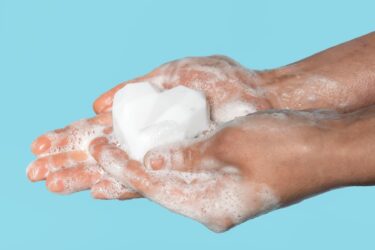
Clean the affected area with soap and water twice daily before you apply any home remedies or any other medication. This will control the spread of infection. While soap and water may not always be able to eliminate a fungal infection entirely, it helps to keep the spread down and lower the intensity of the infection.
Searching for best anti-fungal soap? Check out – Abzorb Antifungal Soap

Apple cider vinegar has antifungal properties. You could mix two tablespoons in warm water and drink it up or dip a cotton ball in it and dab over your skin. Doing this thrice a day should produce beneficial results.
Know more about the health benefits of apple cider vinegar.
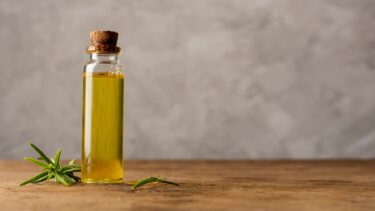
Tea tree oil is naturally antifungal and antibacterial. Mix it with any carrier oil like coconut oil or olive oil and dab over the infected area about three to four times a day. This is one of the most effective home remedies to treat fungal infections.
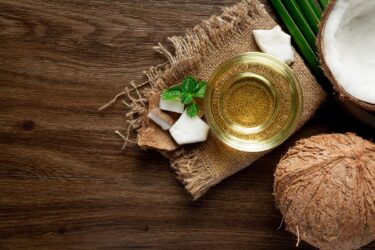
In its unheated form, even coconut oil works as a potent antifungal agent. Applying it over the skin makes it a good, safe topical medicine. Since it is easy on the skin, it is also useful to treat scalp ringworm. Use over the skin three times a day.

Turmeric is a potent antimicrobial and anti-inflammatory spice. Mix with a little water and apply over the infected area. To get benefits in the internal body environment, mix with warm water, or have turmeric tea. This is one of the easiest home remedies for fungal infection as turmeric is present in all Indian kitchens across households.
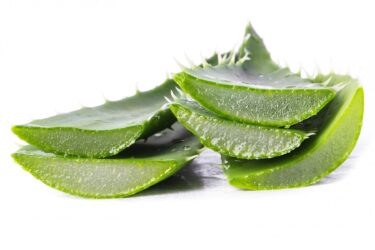
One of the most time-tested natural remedies to cure any skin infection is aloe vera. It not only treats the infection but also soothes and repairs skin damage. Also, read aloe vera’s benefits for face and skin.
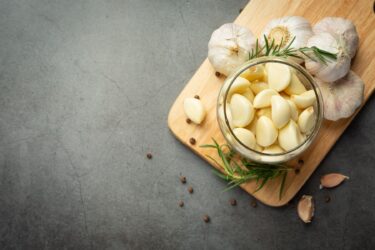
Garlic is one of the most potent antifungal and antimicrobial herbs. Those who eat garlic regularly are less susceptible to fungal infections. Crush a couple of garlic with some olive oil and make a paste. Apply to the infected area for about thirty minutes. Also, read the benefits of garlic for health.
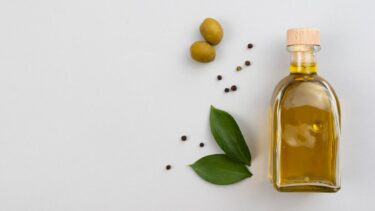
Another active antifungal agent is oregano oil. Mix a few drops with any carrier oil and dab on the affected area. You could also take oregano oil capsules orally.
Follow these remedies regularly to achieve the desired results. Check for allergies to essential oils before using them.

Neem leaves have effective antifungal properties and are extremely good for the skin. Washing the infected area with neem water helps in treating fungal infections. To make neem water, boil neem leaves in water for 2 to 3 minutes.

Vitamin C (Ascorbic acid ) boosts our immune system. It protects our body from various infections. A good immune system also helps to treat fungal infections faster.
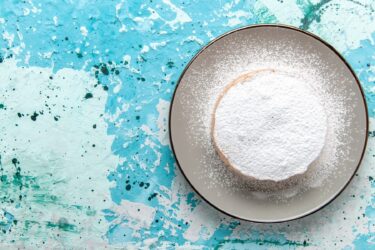
Baking soda is useful in fungal infections like athlete Foot. Applying baking soda powder on our feet and the inside of our shoes helps to absorb moisture and sweat. It thus prevents the infection from spreading.
Also Read: Baking Soda Bath: Research-Based Benefits and How to Do It Properly
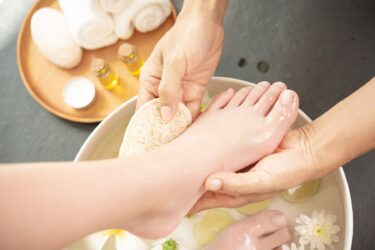
Hydrogen Peroxide helps to cure Athlete’s Foot. Soaking our feet in a solution made using equal parts of water and hydrogen peroxide effectively kills the fungus causing athletes’ feet.
Alternatively you can use Dettol Antiseptic Liquid Bottle
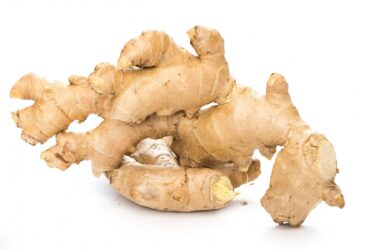
Gingerol present in ginger has potent antifungal properties. Adding ginger to our diet in the form of ginger tea effectively helps to prevent and treat fungal infections like Candida.

Using honey is also one of the easiest home remedies for fungal infection as it contains hydrogen peroxide, very effective to kill fungus and bacteria which are responsible for causing skin infections. Applying raw honey to the affected region is the best solution as it is loaded with healing properties.

Research has relieved that grapefruit seeds extract has the healing power to treat fungal infections. To do so, mix a drop of the seed extract with a few drops of water and apply to the affected spot(s) twice a day.

Licorice is naturally bestowed with anti-inflammatory or anti-microbial properties and is therefore perfect to take care of fungal infections. To use it, add powdered licorice to a cup of water and bring it to a boil. After a few minutes, let it simmer. Once it has assumed a paste-like consistency, let it cool and apply the mixture to the affected skin twice a day.

Lemongrass is also laden with anti-microbial properties so you can easily use it to treat your fungal injection as one of the home remedies. You need to mix lemongrass oil with a carrier oil and dab it on the affected region with a cotton ball or swab two times a day!
Looking for best lemongrass oil? Check out – Khadi Natural Lemongrass Essential Oil
Want to get rid of fungal infection? Check out – Augmentin 625 Uses
The fact is, most fungal infections are easily curable with proper treatment, you may not even be aware you have a fungal infection. Self-examination goes a long way to identifying fungal infections early, especially if there are no other symptoms like itchiness or irritation. If there is no improvement with these home remedies, seek out medical attention for further treatment.
Read more about Anantamul: Uses, Benefits & Side Effects
Avoid the spread of any infection by getting checked up!
Yes, fungal infections may occur during winters. The fungi that cause this condition like being in a wet environment, particularly skin, nails, and shoes. Even a little bit of sweat can lead to fungal infections so you must keep your skin clean and dry.
If a fungal infection is left untreated, it may lead to serious health problems, such as skin infections, fatigue, oral thrush and others.
Fungal infections can be contagious in some cases. They can spread from one person to another, which is why as soon as you develop signs or symptoms of a fungal infection, you must consult a doctor.
Also Read: What Causes Thick Toenails: Understanding the Possible Underlying Conditions
Disclaimer: The information provided here is for educational/awareness purposes only and is not intended to be a substitute for medical treatment by a healthcare professional and should not be relied upon to diagnose or treat any medical condition. The reader should consult a registered medical practitioner to determine the appropriateness of the information and before consuming any medication. PharmEasy does not provide any guarantee or warranty (express or implied) regarding the accuracy, adequacy, completeness, legality, reliability or usefulness of the information; and disclaims any liability arising thereof.
Links and product recommendations in the information provided here are advertisements of third-party products available on the website. PharmEasy does not make any representation on the accuracy or suitability of such products/services. Advertisements do not influence the editorial decisions or content. The information in this blog is subject to change without notice. The authors and administrators reserve the right to modify, add, or remove content without notification. It is your responsibility to review this disclaimer regularly for any changes.
Apart from a host of allergies and infections, monsoons provide perfect breeding conditions for mosquitoes. Mosquito bites can lead to diseases like malaria, chikungunya, and dengue, which can prove to be fatal. Some of the symptoms of dengue are high fever, headaches, muscle and joint pain, fatigue, exhaustion, skin rash, and low pressure. You cannot cure dengue fever with home remedies, but you can alleviate the symptoms of the fever through them. Here are some of them.
Ayurveda makes use of Giloy herb to control any fever. For dengue, it is quite effective in bringing down the temperature. It enhances immunity and combats infections. Giloy concentrate and tablets are available in most Ayurveda shops.
Methi leaves are useful in reducing elevated body temperature and decrease muscle pain. They promote sleep and allow the body to rest and heal. Methi seeds also can be used. Just soak overnight and have on an empty stomach in the morning.
Papaya leaves are beneficial if you want to increase your platelet count. In dengue fever, the platelet count decreases and can lead to complications. They are rich in vitamin C and antioxidants that reduce stress on the body. They also reduce other symptoms like chills, body ache nausea, and fatigue. Crush the leave and take out the juice. About two tablespoons should be had daily.
Turmeric is an important spice to heal the body. It is antiseptic, antimicrobial, and anti-inflammatory. It boosts metabolism and initiates inner healing. Consume a pinch of turmeric in your milk for the best results. Also, read 10 health benefits of turmeric.
Tulsi or the holy basil is almost a wonder herb if you want to increase your immunity. Boil tulsi leaves with some black pepper and has it daily. This will fight off infections and build up immunity. Read more about the health benefits of tulsi (Basil)
Dehydration is a common problem in dengue. Ensure that you have plenty of fluids to stay hydrated. This detoxifies the system and also alleviates headaches and muscle cramps.
Neem leaves serve many purposes. Boil water and let neem leaves seep in it for some time. Drinking this water increases the blood platelet and white blood cell count. Having neem water concoction increases immunity and strengthens the body. Also, by burning the dried leaves, you can ward off mosquitoes in your vicinity.
Citrus fruits are very beneficial when suffering from dengue fever. Vitamin C present in these fruits, especially organs and orange juice, helps improve immunity, detoxifies the body, initiates cell repair, and combats infections.
Goldenseal is a herb that has a similar action as papaya leaves. The dried roots of this herb are very effective against dengue fever. It helps to eliminate the virus from the body.
To avoid falling prey to dengue fever, use mosquito repellents. These could be in the form of ointments or by using mosquito nets. Read more on the home remedies for mosquito control.
While it is important to know what food you need to have if you are suffering from dengue fever, it is also important to know what foods you need to avoid during this time. Here is a shortlist of the food items to avoid during dengue fever:
Fried and oily foods contain significant amounts of fat and bad cholesterol. These may lead to increased blood pressure and fat deposition in the blood vessels. It is best to avoid these kinds of food which may affect the immune system and introduce other health conditions, and opt for a lighter diet.
Spicy food items are strictly not recommended for patients suffering from dengue, since these types of food cause stomach acid to accumulate, irritate the digestive system inner lining, and may even cause ulcers and damage. This can slow down the recovery process.
While recovering from dengue, it is necessary to keep the body hydrated by drinking lots of fluids. However, caffeinated beverages are not among them since they typically increase blood pressure and heart rate and can cause muscle breakdown, which can be fatal during dengue fever.
Consuming non-vegetarian food is best avoided during your recovery from dengue fever since digesting these types of food take longer to digest and place more stress on the resources of the body. Try to stick to simple and vegetarian foods.
Also Read: 5 Effective Preventive Measure for Dengue
Disclaimer: The information provided here is for educational/awareness purposes only and is not intended to be a substitute for medical treatment by a healthcare professional and should not be relied upon to diagnose or treat any medical condition. The reader should consult a registered medical practitioner to determine the appropriateness of the information and before consuming any medication. PharmEasy does not provide any guarantee or warranty (express or implied) regarding the accuracy, adequacy, completeness, legality, reliability or usefulness of the information; and disclaims any liability arising thereof.
Links and product recommendations in the information provided here are advertisements of third-party products available on the website. PharmEasy does not make any representation on the accuracy or suitability of such products/services. Advertisements do not influence the editorial decisions or content. The information in this blog is subject to change without notice. The authors and administrators reserve the right to modify, add, or remove content without notification. It is your responsibility to review this disclaimer regularly for any changes.
Jaundice occurs when the bilirubin levels increase in the blood. This leads to yellowing of the eyes and the skin. In itself, it is not a disease but points towards an underlying medical condition. It is a common condition in newborn infants and goes away within a few days. However, it can be a life-threatening condition in adults and infants both, if left untreated.
Some symptoms of jaundice are vomiting, nausea, loss of appetite, fever, abdominal pains and headaches, swelling of legs and abdomen, and weakness. While aggressive medication would be needed in most cases, many natural home remedies can help in quicker healing from jaundice.
Before we get into remedies, let’s take a quick look at the signs and symptoms of jaundice in adults. These can help you figure out whether you or someone you know has jaundice:
Additionally, you may be at a higher risk of developing jaundice if you have recently lost a lot of weight or if you have certain cancers (such as pancreatic cancer). Diseases like hepatitis and an inflamed liver may also lead to jaundice. If you have any of these conditions then look for the signs of jaundice mentioned above. Note that the yellow colouration occurs due to excessive amounts of bilirubin being circulated in the blood.
Now, let’s look at some popular home remedies for supporting your jaundice treatment. Be mindful that none of these remedies can replace medication recommended by your doctor:
When infants are diagnosed with Jaundice, apart from phototherapy, doctors recommend exposing them to sunlight as it is beneficial.
Sugarcane juice helps in strengthening the liver and aids in its proper functioning. Have a glass daily till your jaundice improves.
At par with cow’s milk regarding nutrients, goat’s milk is easy to digest and is suitable for infants and adults alike. Goat’s milk also has useful antibodies that help in curing jaundice.
Juice of green grapes helps in improving the liver functioning. It balances the serum bilirubin levels and cures jaundice.
Ginger has excellent antioxidative properties. It is also hypolipidemic so it helps the liver. Have in the form of ginger tea for best results.
Garlic is a powerful antioxidant. This helps with liver detoxification and thus contributes to curing jaundice. Know more about the health benefits of garlic.
Lemon juice helps in unblocking the bile ducts as it has antioxidant properties. Also, it enhances immunity and stops further damage to the liver.
The probiotics in yogurt help improve immunity. It brings down levels of serum bilirubin and offers protection against harmful bacteria. Have a bowl of curd daily to cure your jaundice. Read more on the health benefits of yogurt.
Lycopene, a compound found in tomatoes, is a potent antioxidant. This helps with detoxification of the liver and curing of jaundice. Make a juice of boiled tomatoes and have a glass daily.
Amla is rich in vitamin C and other essential nutrients that help in combating jaundice. It improves liver functioning and helps balance the serum bilirubin levels. Boil amlas, make a paste and mix this with water and honey and have daily.
Read More: 7 Health Benefits of Amla
Tulsi or holy basil is perfect for the liver as it has hepatoprotective properties. It improves immunity and fights off infections. Boil Tulsi leaves in water and have this daily. Know more about the health benefits of tulsi.
Papaya leaves are rich in papain enzymes that support digestion and improve liver health. Grind the leaves and strain to get the juice. Have a tablespoon daily.
Before using any home remedy, consult with your doctor. With regular medications and home remedies, you would be able to combat jaundice more effectively.
Disclaimer: The information provided here is for educational/awareness purposes only and is not intended to be a substitute for medical treatment by a healthcare professional and should not be relied upon to diagnose or treat any medical condition. The reader should consult a registered medical practitioner to determine the appropriateness of the information and before consuming any medication. PharmEasy does not provide any guarantee or warranty (express or implied) regarding the accuracy, adequacy, completeness, legality, reliability or usefulness of the information; and disclaims any liability arising thereof.
Links and product recommendations in the information provided here are advertisements of third-party products available on the website. PharmEasy does not make any representation on the accuracy or suitability of such products/services. Advertisements do not influence the editorial decisions or content. The information in this blog is subject to change without notice. The authors and administrators reserve the right to modify, add, or remove content without notification. It is your responsibility to review this disclaimer regularly for any changes.
For more than a year and a half, COVID-19 has dominated the news and been the chief topic of conversation. After the destruction it wreaked during the second wave, it is not surprising that people start panicking the moment their body temperature exceeds the normal. Fever is one of the primary symptoms of COVID-19. Doctors have been telling us to get an RT-PCR test done if we experience fever and other signs of COVID-19.
While it is always better to be safe than sorry and get tested for COVID-19, you need to know that having a fever does not always mean that you have contracted a COVID infection. It could just be a seasonal fever. But fever is also a common symptom associated with many other infections and diseases. You need to be wary of them as well.
Monsoon is that time of the year when multiple diseases strike India. Some of these diseases are harmless while others have the potential to become deadly. Many of the symptoms of these diseases are rather similar to COVID-19. You need to be able to differentiate them so that you can take the right action at the right time.
Let us look at monsoon diseases more closely.
In India, there are 3 types of monsoon illnesses:
Unfortunately, it is very difficult to tell the diseases apart from the symptoms they trigger. Here is how they are similar:
Wondering about the differences between the monsoon diseases and COVID-19? Viral fever vs corona or common cold vs COVID or malaria vs COVID, how can they be differentiated? By understanding the symptoms you are experiencing:
The best way to know which illness you are down with is to consult a doctor the moment your symptoms show up. Doctors are more adept at understanding your symptoms and linking them to the diseases that might be causing them. For diagnosis, doctors recommend tests. For example, usually, the MAC-ELISA blood test is recommended for detecting dengue, the Widal test for typhoid and the Culture Method is prescribed for cholera.
It is imperative that you do not waste time once you start experiencing symptoms. Diseases like dengue, typhoid or cholera can be fatal if you are not given the right medication as soon as possible.
Prevention is always more preferable to cure. There are a few simple ways you can keep yourself safe from monsoon illnesses:
If you or your loved ones are ill, seek medical help immediately, even if you think the symptoms are minor. With proper medication, nutrition and care, it is possible to bring monsoon illnesses and COVID-19 in control but only if the diagnosis happens at the right time.
Also Read: Dolo 650 Uses
Disclaimer: The information provided here is for educational/awareness purposes only and is not intended to be a substitute for medical treatment by a healthcare professional and should not be relied upon to diagnose or treat any medical condition. The reader should consult a registered medical practitioner to determine the appropriateness of the information and before consuming any medication. PharmEasy does not provide any guarantee or warranty (express or implied) regarding the accuracy, adequacy, completeness, legality, reliability or usefulness of the information; and disclaims any liability arising thereof.
Links and product recommendations in the information provided here are advertisements of third-party products available on the website. PharmEasy does not make any representation on the accuracy or suitability of such products/services. Advertisements do not influence the editorial decisions or content. The information in this blog is subject to change without notice. The authors and administrators reserve the right to modify, add, or remove content without notification. It is your responsibility to review this disclaimer regularly for any changes.
We as humans always are living in a dynamic atmosphere. Our diet, weather, routines, and a multitude of other factors change on a regular basis. Likewise, the microbial content of even an otherwise healthy person’s gut can be affected by changes in the environment or season. This is more so in monsoon when the dampness in the weather hugely increases the disease-causing microbes.
Paradoxically, the gut enzymes activity is lesser in the wet season than in summers, thus affecting the process of digestion. This may lead to indigestion and cause sluggishness.
Also Read: Benefits of Colostrum: A Deep-Dive Into its Health-Boosting Properties
It is therefore essential to pay heed to what we eat.
Children are vulnerable in the monsoons and often fall prey to infections and viruses. Here are simple tips to keep your children healthy this season! Monsoons also wreak havoc on one’s skin, but you can avoid them. Learn how here. If you have waded through floodwater, learn how to prevent leptospirosis.
Happy and healthy monsoon!
Also Read: What Is Leaky Gut: Exploring the Facts and Debunking the Myths
Disclaimer: The information provided here is for educational/awareness purposes only and is not intended to be a substitute for medical treatment by a healthcare professional and should not be relied upon to diagnose or treat any medical condition. The reader should consult a registered medical practitioner to determine the appropriateness of the information and before consuming any medication. PharmEasy does not provide any guarantee or warranty (express or implied) regarding the accuracy, adequacy, completeness, legality, reliability or usefulness of the information; and disclaims any liability arising thereof.
Links and product recommendations in the information provided here are advertisements of third-party products available on the website. PharmEasy does not make any representation on the accuracy or suitability of such products/services. Advertisements do not influence the editorial decisions or content. The information in this blog is subject to change without notice. The authors and administrators reserve the right to modify, add, or remove content without notification. It is your responsibility to review this disclaimer regularly for any changes.
Come monsoon and the mosquitoes flit in and out of our homes, biting us surreptitiously. Most mosquito-borne diseases are fatalistic in nature causing diseases like dengue, malaria, and chikungunya. Therefore it is important that you prevent their proliferation and treat the mosquito bites. The best thing is to control mosquito populations in the vicinity. Most species of these pests have become resistant to insecticides. The best bet would be to depend on home remedies for mosquito control. Let us take a look at some of them.
Dry ice emits a lot of carbon dioxide but works like a charm against mosquitoes. In a container put some dry ice and keep it some distance away. When mosquitoes have filled up the jar, close the lid.
Sprinkle some coffee grounds on stagnant water, the perfect breeding ground for mosquitoes. This asphyxiates the eggs and prevents their hatching.
In a closed room, light up some camphor and leave the room for thirty minutes. Once you are back, no mosquitoes will be present. Camphor balls and neem oil are other good options.
Mix this oil in some water and sprinkle around the house. It is a very effective mosquito repellent.
Plants like catnip and feverfew are potent mosquito repellents. Plant them in pots and place strategically around the house.
Mosquito bites can be quite irritating and uncomfortable. Instead of scratching, you could use some of the following home remedies for mosquito bites to provide relief to yourself and to your loved ones. Here is our list.
Powder oatmeal and mix with water. Apply on the bites for immediate relief. Oatmeal soothes the skin and relieves irritation.
Crushed ice or regular ice cubes can be applied to the affected area. The cold temperature reduces swelling and numbs the skin. Apply ice for no more than five minutes in one go.
The humble household plant, Aloe Vera, is very good for the skin as it relieves itching and irritation. It has anti-inflammatory properties. Cut a small section and apply the gel part of the plant to the bites for immediate relief. Wash off the area after some time.
Baking soda is another regular kitchen component that can soothe mosquito bites. Make a paste of baking soda and water and apply it to the affected area. Leave it for ten minutes before removing it.
The staple vegetable can be used over mosquito bites. They are antifungal and reduce irritation. Chop a slice from an onion and let it sit over the bite for some time. Rinse the area after you remove it.
Use a mosquito net to avoid getting bitten by mosquitoes. Prevention is better than cure. Avoid water stagnating around your homes to keep the mosquito populations under check.
Also Read: Malaria Prevention Tips – How To Avoid Malaria
Disclaimer: The information provided here is for educational/awareness purposes only and is not intended to be a substitute for medical treatment by a healthcare professional and should not be relied upon to diagnose or treat any medical condition. The reader should consult a registered medical practitioner to determine the appropriateness of the information and before consuming any medication. PharmEasy does not provide any guarantee or warranty (express or implied) regarding the accuracy, adequacy, completeness, legality, reliability or usefulness of the information; and disclaims any liability arising thereof.
Links and product recommendations in the information provided here are advertisements of third-party products available on the website. PharmEasy does not make any representation on the accuracy or suitability of such products/services. Advertisements do not influence the editorial decisions or content. The information in this blog is subject to change without notice. The authors and administrators reserve the right to modify, add, or remove content without notification. It is your responsibility to review this disclaimer regularly for any changes.
Monsoon has set in, and streets are flooded at many places in India. It is essential to consider and avoid certain things to prevent bacterial diseases which generally spread via exposure to such contaminated water.
Exposure to water contaminated with infected animal urine or contact with the urine of infected animals such as rodents, cattle, and pets can cause Leptospirosis.
Therefore, it is essential to protect oneself from contaminated water and infected animals especially if one is pregnant or lactating or an older adult.
Drink boiled water or appropriately purified water.
Avoid wading through floodwater. Avoid swimming or dipping head in rivers, lakes or water suspected to be contaminated with animal urine.
If you have any wounds on your feet or body exposed to contaminated water or your job or other activities (trekking, water sports, swimming, boating or animal rearing), involve exposure to contaminated soil or water or infected animals, ensure adequate protection. Cover your wounds, wear waterproof and protective footwear and clothing like gumboots, rubber gloves, etc.
Watch for rodents in the house and contamination of food and water. Get rid of these appropriate using measures at the earliest. If you have pets, ensure appropriate vaccination which is generally repeated annually.
Nevertheless, if you begin to suffer from either fever, headache, muscle aches, indigestion, rashes or a cough seek medical advice at the earliest because these could be symptoms of leptospirosis and initial treatment has better results and improvement.
Children are prone to infections and viral fever during monsoons. Learn tips to keep your kids healthy in the monsoons. Keep skin infections at bay this rainy season with these tips.
Disclaimer: The above information has been prepared by a qualified medical professional and may not represent the practices followed universally. The suggestions listed in this article constitute relatively common advice given to patients, and since every patient is different, you are advised to consult your physician, if in doubt, before acting upon this information. Lupin Limited has only facilitated the distribution of this information to you in the interest of patient education and welfare.
During the early monsoon, humidity in India is very high!
Our skin naturally has several tiny micro-organisms. The local skin temperature and environmental humidity are most conducive to the growth of microorganisms in early monsoon. In addition, in people who suffer from diseases like type 2 diabetes or any condition which lowers immunity, there is a higher risk of infection when the humidity in the atmosphere rises, particularly during the monsoon season. Therefore it is essential to take extra care of our skin health this season too.
Rashes and itching in the region of skinfolds can be caused by skin-on-skin friction, which can increase due to moisture. Such inflammation is bothersome in obese adults as well as children. Also, such inflammation can occur in natural body folds. Inflammation of the skin due to increased moisture or humidity in the environment further increases the risk of infections. Hence, it is essential to reduce moisture in the skin/skin folds using appropriate measures. For eg., Powders are absorptive.
Pay additional attention to personal hygiene measures like regular bath, hand hygiene with soap and water, using alcohol-based hand rub, and trimming nails. Avoid overcrowded places, avoid reuse of essentials or sharing of personal items for example towels etc. If one is physically very active or travels a lot, it is important to shower well and pat dry the body especially the skin folds, and space between fingers and toes thoroughly.

To reduce the risk of foot infections, it is advisable to –
Monsoon and resulting decrease in temperature cause increase in sebum production, clogging of pores and can cause acne, folliculitis. Incidence of rashes increases with the onset of monsoon because fall in temperature with humid weather causes pollen grains to burst open releasing pollen allergens into the air.
Dr. M.G. Kartheeka, MBBS, MD
To reduce the risk of skin infections
If one already has some wound, it is essential to watch for infection since moisture increases the risk. Medical advice should be sought.
Children are easily affected by the moisture and dampness in the monsoons. They are more prone to infections. Here is how you can keep children healthy in monsoons. If you have waded through monsoon waters, you are vulnerable to Leptospirosis. Read here how to avoid it.
Disclaimer: The above information has been prepared by a qualified medical professional and may not represent the practices followed universally. The suggestions listed in this article constitute relatively common advice given to patients, and since every patient is different, you are advised to consult your physician, if in doubt, before acting upon this information. Lupin Limited has only facilitated the distribution of this information to you in the interest of patient education and welfare.
Next Page »